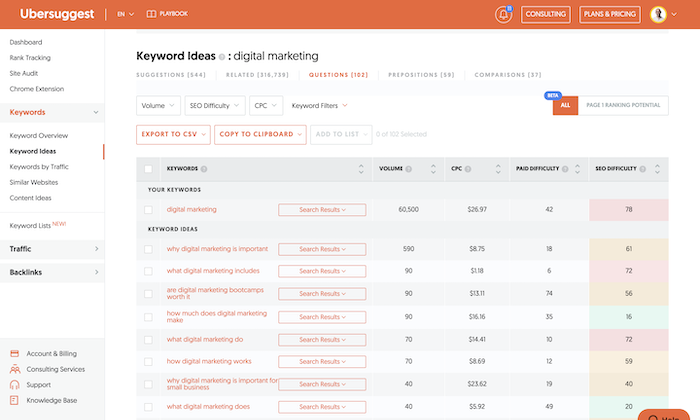
Even though my company is approaching 700 people, which I still can’t believe, I still do a lot of my own marketing.
Especially when it comes to SEO.
And over the years I’ve learned how to do keyword research fast because let’s face it, none of us have “hours” to spend on this kind of stuff.
So, what’s the quick and dirty way that I do keyword research?
Let’s get started…
Step #1: Head to Ubersuggest
Go here and type in a keyword related to your industry.
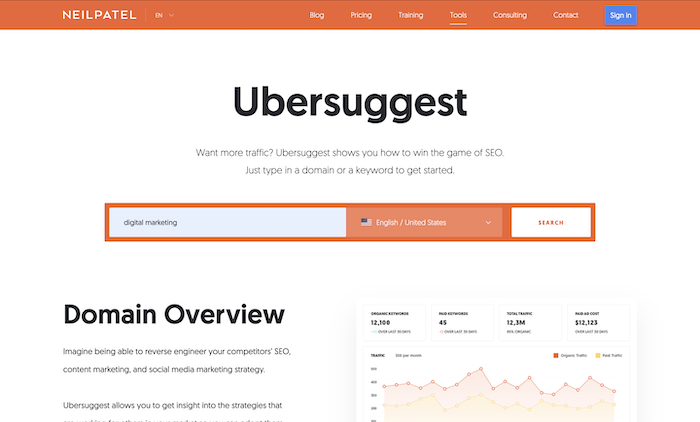
It can be on anything related to what you do. For example, I am in the digital marketing field, so as you can see from the image above you’ll notice that I typed in “digital marketing”.
You’ll be shown a report that looks like this.

Now if you are a global company or want to do business around the world, go to step 2, if not then skip to step 3.
Step #2: Change your location to global
In the search bar, change your location to global.

By re-running your search using global data you can see how popular that search term is in all countries.
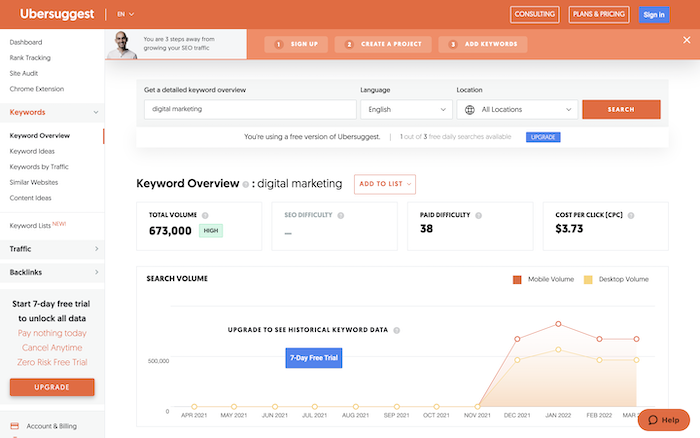
As you can see from the screenshot above the global search volume for “digital marketing” is a little bit more than 10 times higher than the search volume within the United States.
This is important for me because my ad agency, NP Digital, operates on a global level and we have clients and team members who are all around the world.
If you don’t have global clients or customers, then no worries, you can stick with doing searches within the region or regions you serve.
Step #3: Let’s dive into the keyword ideas
In the left-hand navigation, I want you to click on “keyword ideas”.
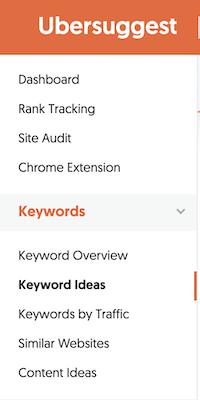
It will take you to a report that looks like this:
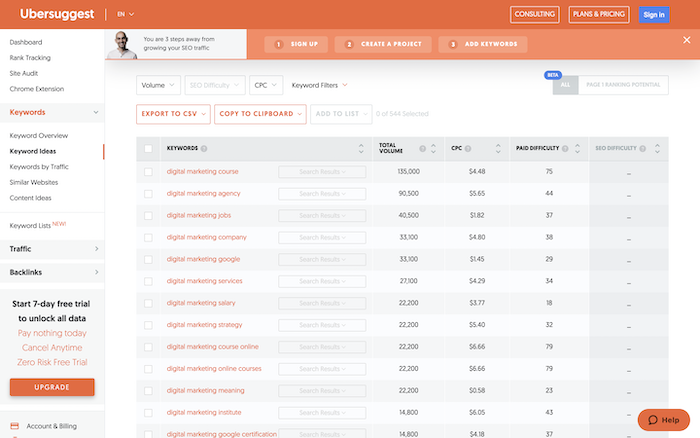
Look for the keywords that are related to your industry, related to the products and services you offer and have a high CPC.
A high CPC is one of the most important parts. The more expensive a keyword is to bid on if you were paying for ads (CPC means cost per click) the chances are the more lucrative that keyword is.
So those are the keywords you will want to select using the tick marks and then add them to your keyword list by clicking on the “add to list” button.
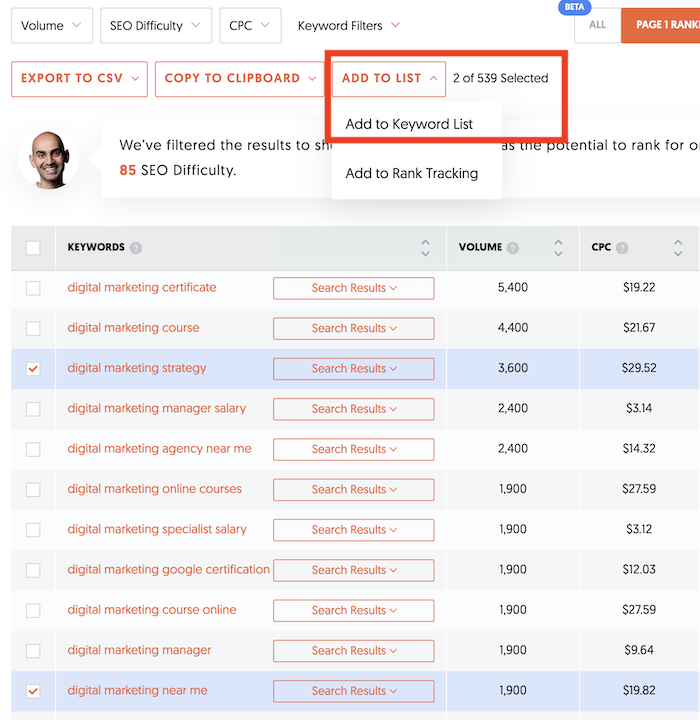
If you don’t already have a list, then you will have to create one. I already have a list called “digital marketing” for all of my keywords related to that. So I just added the 2 new keywords I found to that list.
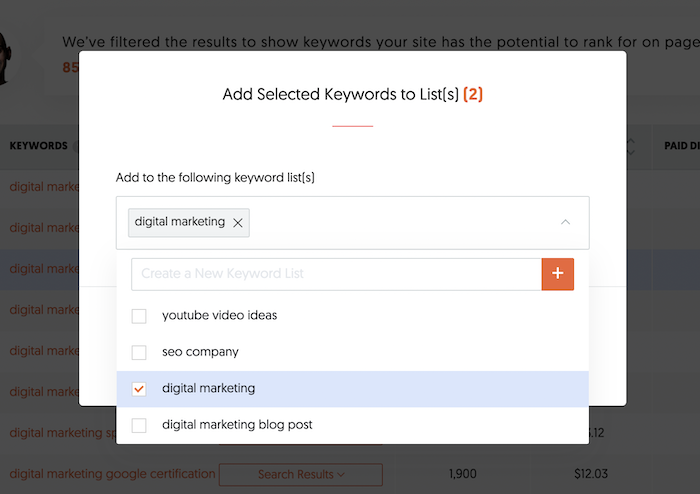
Then click “add keywords” to save it to your list.
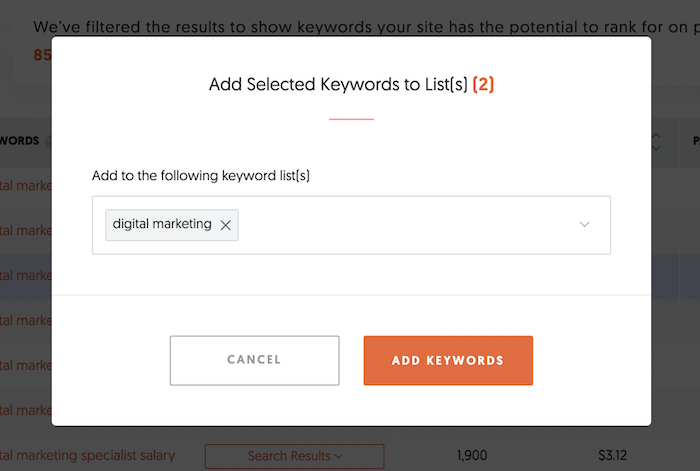
Step 4: Repeat step 3 for all keyword ideas
On the keyword ideas report, towards the top, you’ll notice that there are more keyword ideas under the “related, questions, prepositions, and comparisons” tabs.

Click on each of those tabs, go through the keywords and select the keywords that are relevant to your business and ideally have a high CPC relative to the other keywords on the screen and add them to your list.
The reason you want to click on those tabs is that it gives you different types of keywords. For example, a lot of people search for questions on Google, hence there is a questions tab. Or people compare… such as iPhone versus Samsung. So by going through these tabs you will get more ideas.
Now if you have a new website with little to no SEO traffic go to the next step. If you already have a high domain authority and over 10,000 organic search visitors a month, skip to step 6.
Step 5: Focus on keywords you can rank for
If your site has little to no rankings, little to no backlinks, or barely any SEO traffic then I need you to filter the keywords in the keyword ideas list.
Click on the “page 1 ranking potential” button.

Enter your domain name and click on the right arrow button.
You’ll see the keyword ideas list filtered to now only show keywords that you have a good shot of ranking for in the short term.
This is important because SEO is a slow and steady game. But it is unrealistic for you to wait years for results. So you want to first start off with easier keywords that you will be able to rank for.
And when going through the filtered list of keywords, still look for terms with high search volume, high CPC, and keywords that are related to your product or service.
Step 6: Check out similar websites for more keywords
Now, in the left-hand navigation click on “similar websites”.
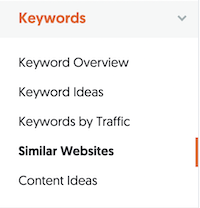
Then I want you to type in your website URL. If you don’t have much SEO traffic you can skip this step.
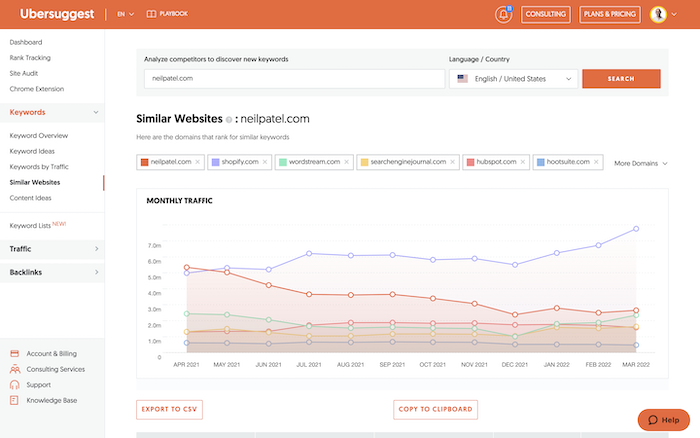
As you scroll down you will then see a list of similar websites. These websites rank for some of the same keywords you rank for and they also rank for other keywords you don’t rank for.
For each competitor click on the “keyword gap” button which will show you the keywords that they rank for that you don’t.
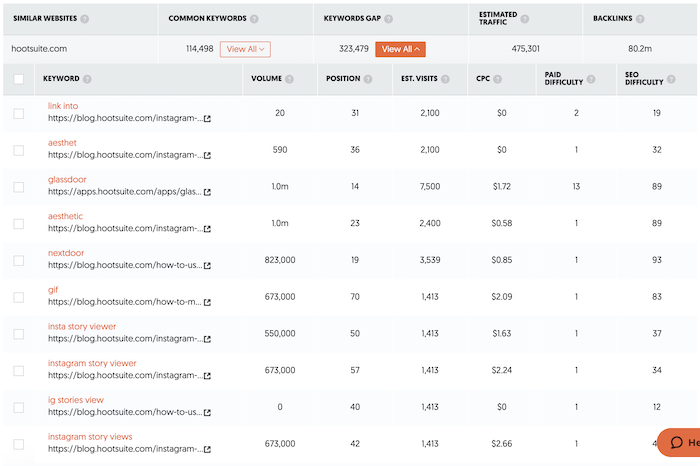
Look for all keywords that are related to the products and services you offer and also have a high CPC.
Make note of the good keywords you find as these are also ones you may want to consider targeting in the future.
Conclusion
Keyword research isn’t hard. If I can do it, anyone can.
Heck, it actually took me longer to write this post than it would have for me to just perform the task of doing keyword research.
Now, when I have hours to spend on keyword research, my process is much more in-depth, but what I mentioned above is the process I follow 90% of the time.
It works… it’s how I grew my traffic to over 5 million visitors a month.
How do you do your keyword research?
from Neil Patel's Digital Marketing Blog https://ift.tt/74Ve6yO

No comments:
Post a Comment